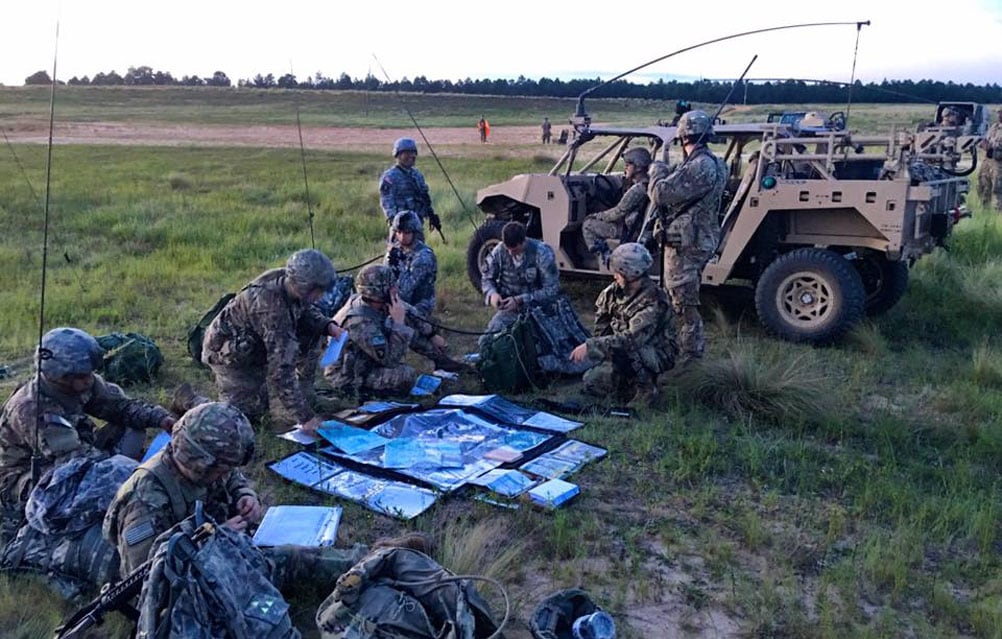Soldiers recently tested software that would allow commanders to plug into the battlefield picture being seen by their soldiers in remote locations from across the globe, providing mission command from home station.
Units in the 82nd Airborne Division, 4th Infantry Division, 62nd Expeditionary Signal Battalion and 2nd Cavalry Regiment have all tested the software, which remains in beta, or testing mode, according to an Army release.
Soldiers with the 4th Infantry Division’s 3rd Armored Brigade Combat Team used the Tactical Interface Tracking Node during a November rotation at the National Training Center at Fort Irwin, California.
“TITAN users can pull up maps, view multiple global locations, and color-code their soldiers' locations,” said Flora Marshall, product lead for the Mission Command Support Center. “It enables chat, messaging, sending attachments, filing situation reports, and creating distribution lists.”
It enables detailed communications while sharing a common operational picture for one or more areas of operations.
TITAN uses the existing Blue Force Tracking network infrastructure that enables friendly force tracking for tens of thousands of Army and Marine Corps vehicles with Joint Battle Command-Platform hardware and software.
It requires only a secure computer and no additional equipment beyond what is being used in the field now.
RELATED

Much of what soldiers are using mirrors software and interfaces they see in civilian life.
“It’s bringing communications capabilities and tools — similar to what soldiers use in the commercial world — directly to the tactical edge,” Marshall said.
On the other end of the mission command chain, developers with the U.S. Army Research, Development and Engineering Command’s Communications-Electronics Center at Aberdeen Proving Ground, Maryland, have found ways to make field mission command equipment more robust, mobile and smaller.
Some of the advances include the Expeditionary Command Post shelter, a 20-foot box with integrated power outlets, air conditioning, network cabling and video distribution system. It’s containerized so that it can be hauled on a truck or sling-loaded under a helicopter.
Another mobile option researchers built is the Light-Mobile Command Post, a pull-out table and tent combination that is installed in the back of a Humvee. It includes fixed TV monitors, built-in radio networks, cabling and computers.
Beyond a structure or tent solution, researchers have also outfitted small and mid-size all-terrain vehicles, specifically the Polaris MRZR. The focus of these is to provide airborne or air assault operations with a full-fledged command post in a smaller package.
Those types of field solutions give the soldiers on site ways to move, grab a picture of what’s going on and direct forces in rapidly-evolving engagements.
The new TITAN software lets those at home station or at other levels of command peer into that field picture and better direct the complex movements of fast-paced operations.
Developers began the pilot program in August and are expected to conclude testing in February. They will then add capabilities and determine when to field the capability.
Todd South has written about crime, courts, government and the military for multiple publications since 2004 and was named a 2014 Pulitzer finalist for a co-written project on witness intimidation. Todd is a Marine veteran of the Iraq War.




